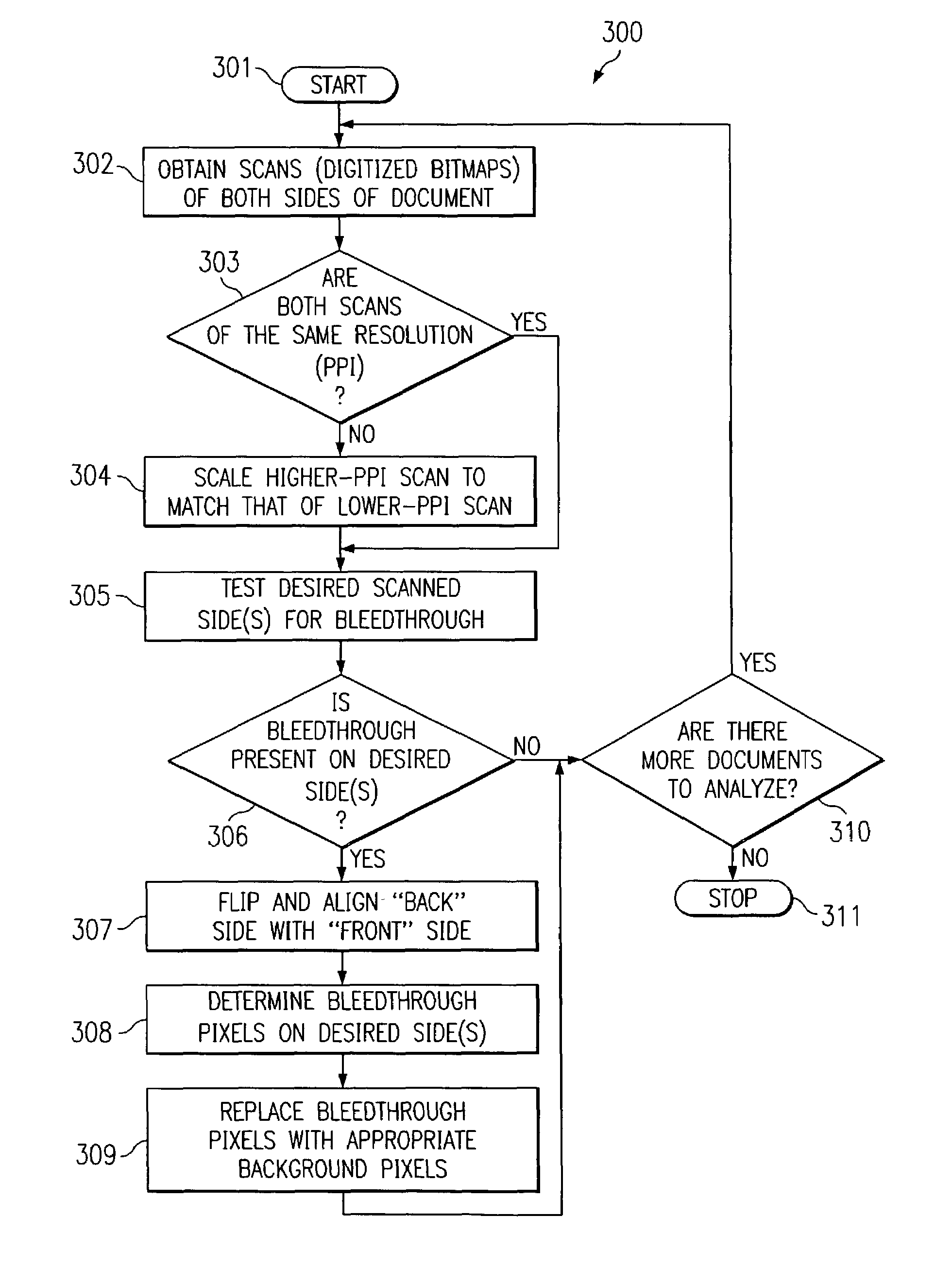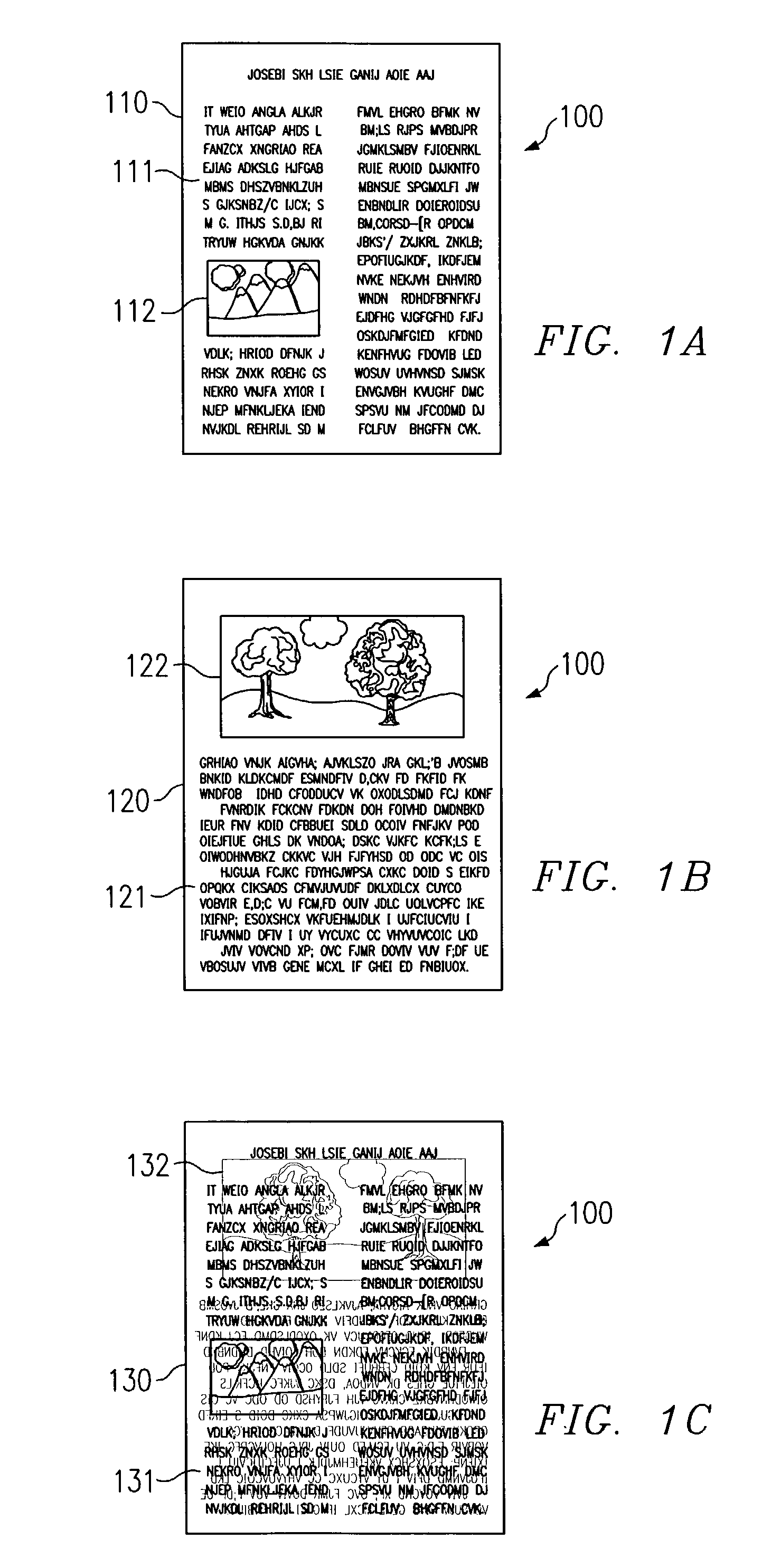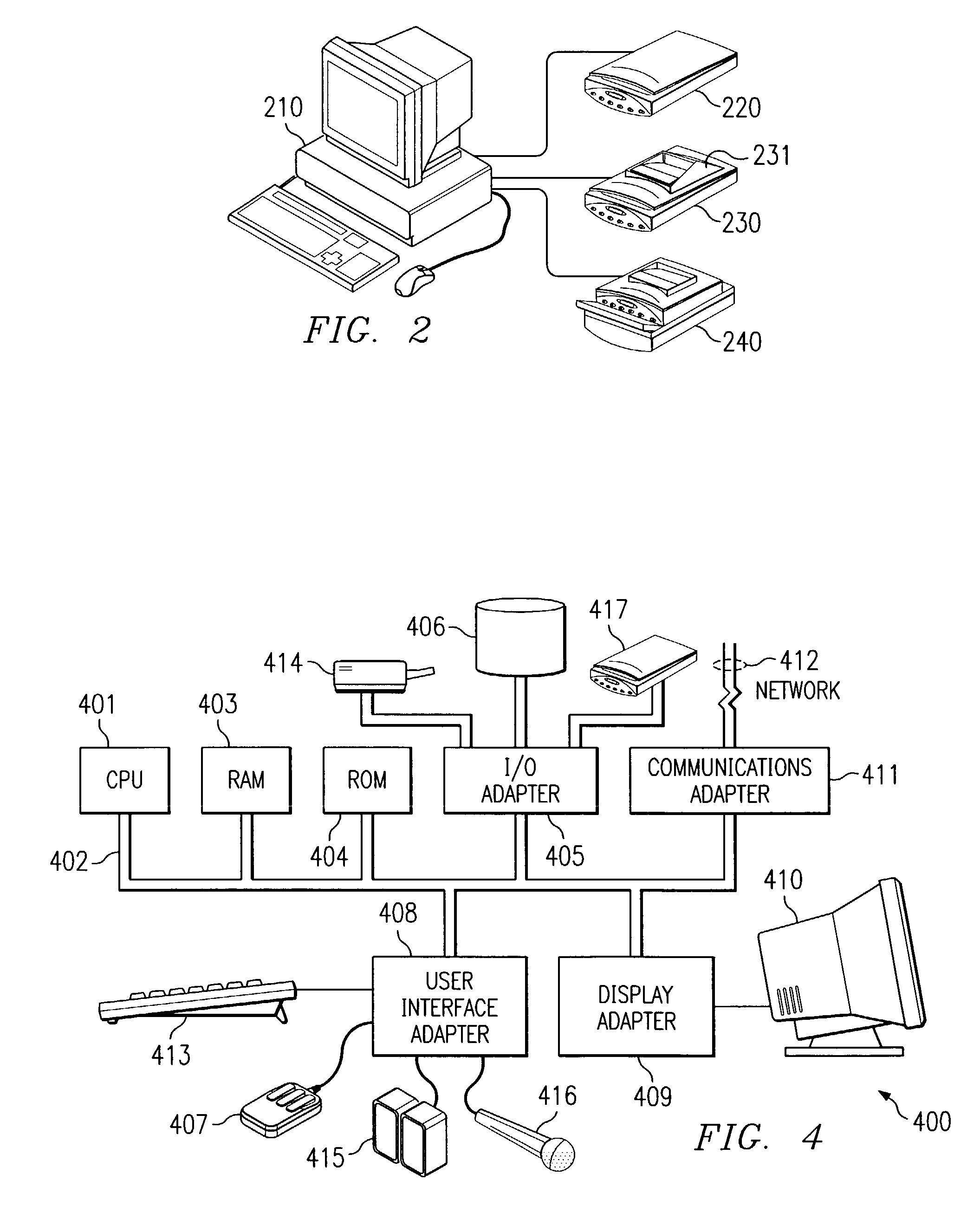System and method for scanned image bleedthrough processing
a technology of bleedthrough processing and scanned images, applied can solve the problems of the front image level of darkness, the electronic image that does not accurately represent the original scanned copy, and the technology implemented in the field of image processing
- Summary
- Abstract
- Description
- Claims
- Application Information
AI Technical Summary
Benefits of technology
Problems solved by technology
Method used
Image
Examples
Embodiment Construction
[0020]The present invention is directed processing of scanned images to limit or eliminate bleedthrough in a scanned image. Accordingly, an embodiment of the present invention utilizes two-sided scanning techniques, wherein not only the front side of a document having a desired image is scanned, but the back side of the document is also scanned to provide information with respect to where bleedthrough may be present in the scanned image of the front side of the document. The information with respect to where bleedthrough may be present in the scanned image may be utilized in such embodiments with other bleedthrough criteria, such as a range of bleedthrough values determined from the scanned image, to identify individual bleedthrough pixels or bits according to an embodiment of the invention. Thereafter, the bleedthrough pixels or bits may be replaced with pixels or bits more consistent with the original scanned image. Replacement of such pixels or bits according to an embodiment of ...
PUM
 Login to View More
Login to View More Abstract
Description
Claims
Application Information
 Login to View More
Login to View More - R&D
- Intellectual Property
- Life Sciences
- Materials
- Tech Scout
- Unparalleled Data Quality
- Higher Quality Content
- 60% Fewer Hallucinations
Browse by: Latest US Patents, China's latest patents, Technical Efficacy Thesaurus, Application Domain, Technology Topic, Popular Technical Reports.
© 2025 PatSnap. All rights reserved.Legal|Privacy policy|Modern Slavery Act Transparency Statement|Sitemap|About US| Contact US: help@patsnap.com



